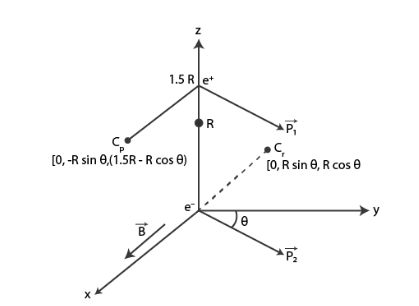Question:
An electron and a positron are released from (0, 0, 0) and (0, 0, 1.5R) respectively, in a uniform magnetic field
$B=B_{0} \hat{i}$ each with an equal momentum of magnitude $\mathrm{p}=\mathrm{eBR}$. Under what conditions on the direction
of momentum will the orbits be non-intersecting circles?
Solution:

When the centres are greater than 2R, then the circular orbits of electron and positron shall not overlap.
Let d be the distance between Cp and Ce
Then d2 = 4R2 + 9/4R2 – 6R2 cosθ
As d is greater than 2R,
9/4 > 6 cos θ or cos θ < 3/8
